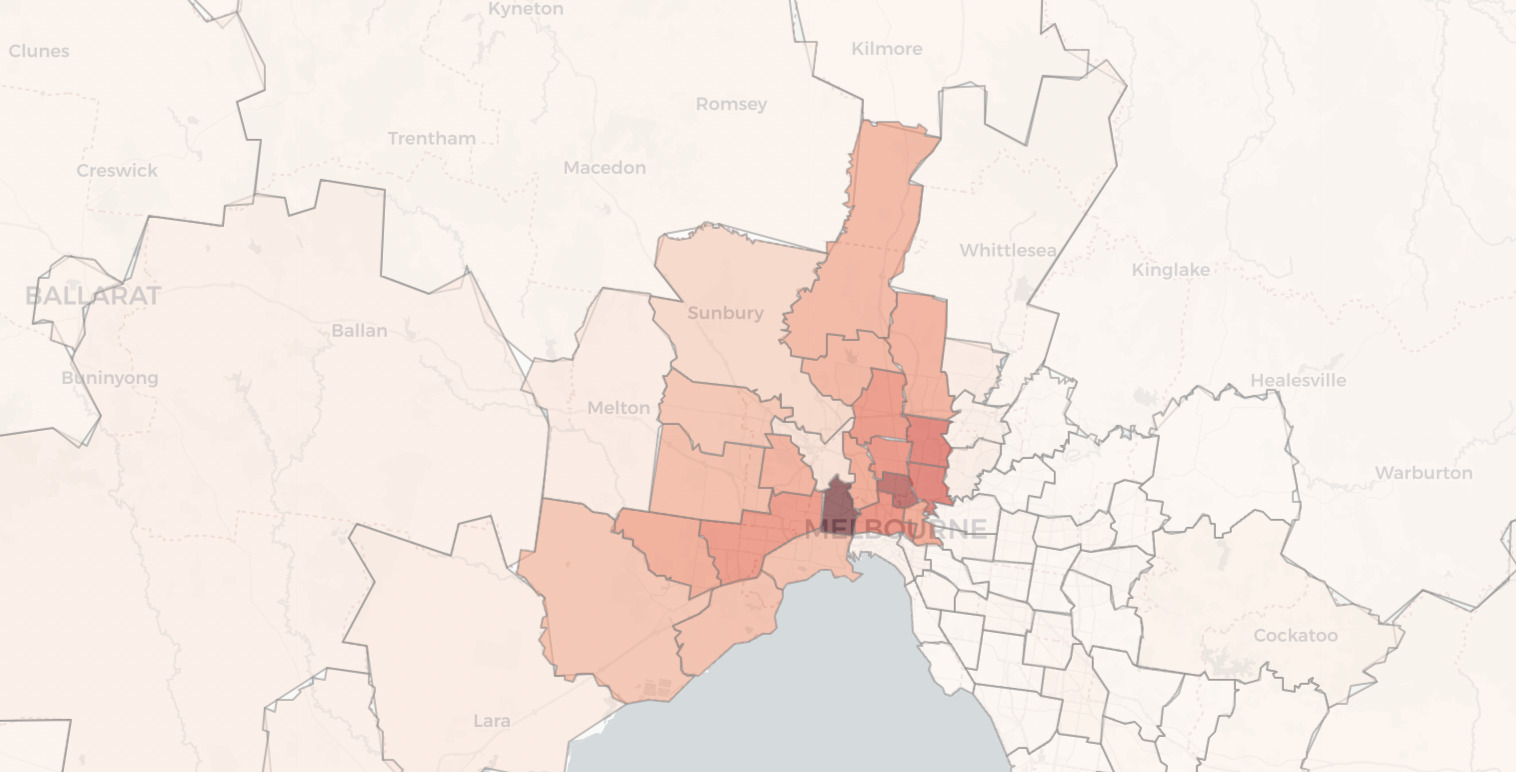One of the most fascinating aspects of the Victorian state election was the role of the small left-wing minor parties. The Greens used to have this lane largely to themselves, but a number of other parties have now emerged, with two of these parties winning seats in the upper house. Those parties also changed the direction of the upper house by opting to preference each other (and then Labor and the Greens) rather than deal with other small parties.
For this post I wanted to explore the geographic spread of support for these parties, inspired by the map of Legalise Cannabis support in yesterday’s post. For this post, I’m looking at Reason, Victorian Socialists, Animal Justice and Legalise Cannabis, and comparing them to the Greens.
Some of these parties have very similar geographic patterns to the Greens, but others look very different.
Legalise Cannabis did best amongst these parties, polling over 4% statewide. The pattern of support for Legalise Cannabis is almost the opposite of the Greens, as this chart shows.
Indeed Legalise Cannabis outpolled the Greens in ten seats in northern Victoria, south-eastern Melbourne and the outer north-west of Melbourne.
When I calculated correlations at the seat level, the correlation between Greens vote and Legalise Cannabis vote was -0.6. There was no relationship between Greens and AJP vote. The Victorian Socialists vote correlates with the Greens, while the Reason vote has a very strong correlation.
You can see that in this following map. The map has six layers, so I have simplified the boundary files to reduce the file size, sorry about that.
The Legalise Cannabis vote is concentrated in outer suburban areas. They barely polled 2% in most of the inner city Greens electorates, but polled 6% or more in Cranbourne, Lara and Frankston.
The other left minor parties had a lower vote, but that vote came closer to matching the Greens support.
Animal Justice support was mostly lower in urban seats with a few exceptions, while their peak was in Monbulk and Macedon on the outskirts of Melbourne.
The Victorian Socialists heavily concentrated their campaign in the northern and western suburbs and that's very obvious on the map. While there was a lot of focus on the Socialists' performance in the outer suburbs, their best seats were still closer to the inner city, in Footscray and Brunswick.
The Reason vote is heavily concentrated in the inner north. Fiona Patten's campaign was strongly focused on her North Metropolitan region, but even within that region her support was much stronger in the southern half. The Reason vote in seats like Kalkallo and Greenvale was very low.
That's it for today, but this topic is bound to come up in the NSW state election, with a number of small left-wing parties competing with the Greens in the upper house.




Interesting that Legalise Cannabis did well in more working class Growth areas while AJP did better in more affluent seats such as Macedon. Interesting to see if within Frankston they did better in the poorer parts like Frankston North/Karringal rather than along the bay.
I’d be interested to see the relationship between the Legalise Cannabis vote and the right wing minor party vote. Legalise Cannabis is really only a single issue party unlike the other left wing minor parties but in other states, some of the Legalise Cannabis MPs have come out as antivaxxers. This makes them more similar to some of the right wing minor parties like the LDP who support drug legalisation but have an anti-vax stance.
The vote share largely correlates to the areas those parties campaigned in, so it’s not all that surprising to me. Legalize Cannabis is maybe an exception, but they mostly seem to capitalize on the weakness of the other progressive parties (not that I really consider LC to be a progressive party itself, let alone left-wing, but it shares a lot of that constituency).
Legalise Cannabis is a federation of state parties (much like for instance the Greens), but the parties vary very widely. Victorian LCP is more strongly aligned with say, the politics and aesthetics of the Greens, whereas SA LCP regularly associates itself with the Lib Dems and, while civil libertarian, rejects other parts of what’s generally considered a “left-wing” position in Australian politics. Interesting stuff.
Comments are closed.